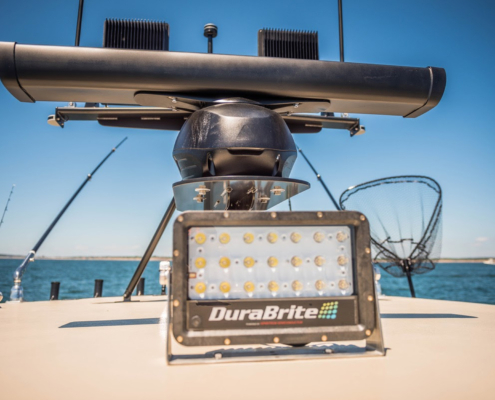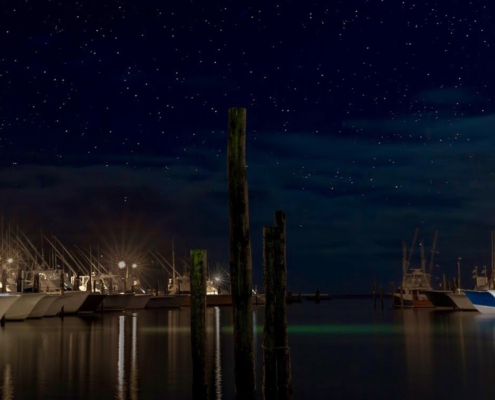 https://blog.durabritelights.com/wp-content/uploads/2025/04/How-Weatherproofing-Maximizes-the-Lifespan-of-Waterproof-Boat-Lights.jpg
1250
2000
Abstrakt Marketing
/wp-content/uploads/2024/01/DuraBrite-Logo_6a362a2d-4dff-4723-a7e4-1466056fae1e_220x.png
Abstrakt Marketing2025-04-21 13:30:212025-04-21 13:30:24How Weatherproofing Maximizes the Lifespan of Waterproof Boat Lights
https://blog.durabritelights.com/wp-content/uploads/2025/04/How-Weatherproofing-Maximizes-the-Lifespan-of-Waterproof-Boat-Lights.jpg
1250
2000
Abstrakt Marketing
/wp-content/uploads/2024/01/DuraBrite-Logo_6a362a2d-4dff-4723-a7e4-1466056fae1e_220x.png
Abstrakt Marketing2025-04-21 13:30:212025-04-21 13:30:24How Weatherproofing Maximizes the Lifespan of Waterproof Boat LightsHow To Raise Bait With LED Boat Lights
What if there were a way to make every trip on the water a fisherman’s dream teeming with fish? It’s not just about patience, skill, or luck anymore. By projecting specially designed lights into or on top of the water in the dark, you can raise bait, saving time and money on your next fishing trip. With the right lights, you’ll be able to:
- Generate bait on demand
- Fish on your own schedule
- Skip early-morning trips to the bait shop
- Replenish your baitwell on multi-day trips
Baitfish like shad and minnows, as well as predatory fish, are naturally drawn to light, an innate instinct known as phototaxis. When smaller fish swarm in and investigate the light, you get the perfect opportunity to net them and prep your tackle while they start luring in the larger trophy fish you’re after.
The Advantages of Raising Bait With LED Boat Lights
It’s no secret that dusk and dawn are prime-time fishing hours for many species like snook, bass, trout, and tarpon. If you’re stuck waiting for the bait shop to open before you can fill your baitwell, then you probably aren’t out on the water when the bite is hottest. All you can hope is they stock the specific bait you’re looking for, and then you have to factor that into the overall cost of the trip. By the time you get to your favorite honey hole, you spot another boat reeling in the trophy that could have been yours. You plan on fishing all day but as soon as you run out of bait on the water, the trip’s over.
For anglers looking to skip the trip to the bait shop while increasing their chances of hooking a trophy in the early mornings or after dark, the traditional method for catching bait has been throwing a cast net in the flats or shallows. If you’ve done that before, you know it can be a dirty job when you’re catching more grass and algae than fish with each throw, and it may take 15 to 20 throws before you’re ready to start baiting hooks.
That’s why more anglers today are skipping trips to the bait shop and keeping their cast nets in the cabinet with LED boat lights designed to bring fish right to the boat.
Types of Boat Lights for Night Fishing Between Dusk and Dawn
Understanding the different types of fishing lights for boats is the best place to start for any angler interested in enhancing their nighttime fishing trips or expanding their fishing hours, whether it’s after dusk or before dawn. As you’re researching your options, you should be familiar with two general types of lights for nighttime boating:
Deck Lights
Boat deck lights help you see what you’re doing around the deck. They illuminate the action when you get a fish on the line while preventing you and your passengers from stumbling over anything on the deck.
Bait Lights
Some boats may also use specialized lights to attract fish at night. These bait lights come in a range of options and may either be attached to the boat or detached, with options including portable lights, underwater lights, or floating lights.
Looking for a boat deck light that also works at attracting fish? The fishermen from Wicked Tuna turn to DuraBrite lights to raise bait while safely illuminating decks and docks.
Optimizing Your Boat Lights for Raising Bait
Getting the most out of your bait lights involves using the right equipment and colors while strategically placing lights to maximize their allure to fish.
Not All LED Lights Work for Attracting Fish
It’s not enough to have an LED light on your boat and expect it to attract fish or raise bait. Only lights with specifically designed optics systems will attract fish to your boat or dock. Unfortunately, most manufacturers won’t disclose whether or not their lights are effective for attracting fish, so if that matters to you, confirm the unit’s capabilities before you buy. Never assume until you see it in action.
Pro tip: If an LED unit lacks a lens collimator and high-powered chip, it will not be effective for raising bait.
Adjusting Intensity and Angle for Different Fishing Conditions
Every fishing expedition is unique, and your approach to using bait lights should be, too. When adjusting light intensity and beam angle, consider factors such as water clarity, depth, and the fish species you’re after. Wider angles tend to attract fish from a larger radius, making them a good starting choice for maximizing your catch area. That being said, you may also want to direct a more focused spotlight in the 15,000 to 25,000-lumen range to target fish lurking in deeper waters.
Above-water bait lights offer an effective way to deliver penetrating light at an angle so it can be seen by more species at greater depths. Floating and submerged lights provide a parallel beam at or near surface level, so they generally don’t attract fish any deeper than that. Floating and subsurface bait lights collect algae, seaweed, and barnacles over time, so unless you keep them clean, their performance deteriorates over time. Submerged lights may also be more prone to overheating if they aren’t submerged, which often leads to premature failure, and they rarely allow you to adjust directionality.
Illumination Requirements for Raising Bait
In general, you can follow these guidelines to ensure your lights will be bright enough to attract curious fish:
- Shallower waters: Use broad floodlights (7,500 – 15,000 lumens) to cover more surface area.
- Deeper waters: Consider adding a focused spotlight (15,000 – 25,000 lumens) to penetrate the depths. Blue and green wavelengths reach the deepest.
- Murky conditions: Increase brightness (25,000+ lumens) to cut through the water’s murkiness.
- Clear conditions: A softer light (7,500 lumens) can be used to attract a range of curious fish without spooking jumpier ones.
Pro tip: Depending on the height of your light installation, you should also factor in illumination requirements to compensate for the distance above the water’s surface. For example, boats that only have room to install lights on the mast or roof generally require more lumens to deliver the additional piercing power necessary for attracting fish.
Remember, finding the best combination of light intensity and beam angle is a matter of trial and error. Experiment on your next night fishing trip to discover what fits your fishing style as well as the species you’re targeting. A light that’s too bright may spook certain species, whereas one that’s too dim might go unnoticed in the open ocean. Look for lights with dimming functionality so you can fine-tune your setup without having to swap out units later.
Matching Color to the Catch
The power of the beam (measured in lumens) and the color of the light determine a light’s effective range beneath the water. But that’s not all! For effective water penetration, LEDs require a lens collimator to create a focused beam that fish will notice. Lights that lack a lens collimator suffer from excessive scatter, so no matter what color they are, they generally lack the punch to attract fish in the first place.
Not all LED lights are capable of attracting fish, but even for those that do, the color of the light generally determines which species of fish a specific unit will attract.
White Light: The Jack-of-All-Colors
White light is the go-to color for LED bait lights, and for good reason. To create white light with an LED, the diode actually emits a mix of both blue and green light —the two most effective colors for attracting more fish. Interestingly enough, blue and green light also offers the deepest penetrating power.
“Light with longer wavelengths is absorbed more quickly than that with shorter wavelengths. Because of this, the higher energy light with short wavelengths, such as blue, is able to penetrate more deeply.” – Source

With a specifically engineered “white” LED bait light, you can appeal to most species while reaching the greatest depths by emitting both green and blue light, all with one unit.
Green Light: The Underwater Magnet
Green lights are the next most common option for attracting baitfish like shad and minnows while also appealing to larger species like trout, redfish, flounder, snook, rockfish, and snapper.
Blue Light: The Saltwater Sensation
If you’re out on the ocean, consider blue light. This cool hue is the preferred choice for saltwater fishing enthusiasts. Not only does it penetrate the water, but it’s also a calming color that seems to speak the language of the marlin or tuna you’re looking to hook.
Choosing the Best LED Light for Raising Bait
Before you buy an LED boat light, make sure you research its bait-raising capabilities, as most LED units (even “marine-grade” LEDs) do not have the power or lens technology to effectively do the job. Depending on the depths you plan to fish, you should start by looking at lights in the 7,500-lumen range but may need to look into 25,000+ lumen count models for penetrating murky waters or reaching deeper layers of the water column. Take a look at DuraBrite’s Original Lineup to start exploring your options for an LED bait light and deck light all in one unit.
Download Our Ultimate Snook Fishing Guide
Snook is one of the most exhilarating species to catch around Florida’s inshore waters. Our resident snook aficionado put together this guide to help anglers get started.
Share This Post
More Like This
 https://blog.durabritelights.com/wp-content/uploads/2025/04/How-Weatherproofing-Maximizes-the-Lifespan-of-Waterproof-Boat-Lights.jpg
1250
2000
Abstrakt Marketing
/wp-content/uploads/2024/01/DuraBrite-Logo_6a362a2d-4dff-4723-a7e4-1466056fae1e_220x.png
Abstrakt Marketing2025-04-21 13:30:212025-04-21 13:30:24How Weatherproofing Maximizes the Lifespan of Waterproof Boat Lights
https://blog.durabritelights.com/wp-content/uploads/2025/04/How-Weatherproofing-Maximizes-the-Lifespan-of-Waterproof-Boat-Lights.jpg
1250
2000
Abstrakt Marketing
/wp-content/uploads/2024/01/DuraBrite-Logo_6a362a2d-4dff-4723-a7e4-1466056fae1e_220x.png
Abstrakt Marketing2025-04-21 13:30:212025-04-21 13:30:24How Weatherproofing Maximizes the Lifespan of Waterproof Boat Lights https://blog.durabritelights.com/wp-content/uploads/2025/04/leviathan-boat-on-water.jpg
1250
2000
Abstrakt Marketing
/wp-content/uploads/2024/01/DuraBrite-Logo_6a362a2d-4dff-4723-a7e4-1466056fae1e_220x.png
Abstrakt Marketing2025-04-04 18:45:522025-04-09 17:01:05How to Maximize the Lifespan of Marine LED Lighting
https://blog.durabritelights.com/wp-content/uploads/2025/04/leviathan-boat-on-water.jpg
1250
2000
Abstrakt Marketing
/wp-content/uploads/2024/01/DuraBrite-Logo_6a362a2d-4dff-4723-a7e4-1466056fae1e_220x.png
Abstrakt Marketing2025-04-04 18:45:522025-04-09 17:01:05How to Maximize the Lifespan of Marine LED Lighting https://blog.durabritelights.com/wp-content/uploads/2025/04/Design-Ideas-for-LED-Deck-Lights-on-Your-Boat.jpg
1250
2000
Abstrakt Marketing
/wp-content/uploads/2024/01/DuraBrite-Logo_6a362a2d-4dff-4723-a7e4-1466056fae1e_220x.png
Abstrakt Marketing2025-04-02 14:09:522025-04-09 16:52:11Design Ideas for LED Deck Lights on Your Boat
https://blog.durabritelights.com/wp-content/uploads/2025/04/Design-Ideas-for-LED-Deck-Lights-on-Your-Boat.jpg
1250
2000
Abstrakt Marketing
/wp-content/uploads/2024/01/DuraBrite-Logo_6a362a2d-4dff-4723-a7e4-1466056fae1e_220x.png
Abstrakt Marketing2025-04-02 14:09:522025-04-09 16:52:11Design Ideas for LED Deck Lights on Your Boat https://blog.durabritelights.com/wp-content/uploads/2025/03/Side-image-of-a-boat-with-lights.jpg
1250
2000
Abstrakt Marketing
/wp-content/uploads/2024/01/DuraBrite-Logo_6a362a2d-4dff-4723-a7e4-1466056fae1e_220x.png
Abstrakt Marketing2025-03-27 18:36:262025-03-31 17:43:25The Hidden Costs of Cheap Marine LED Lights and How to Avoid Them
https://blog.durabritelights.com/wp-content/uploads/2025/03/Side-image-of-a-boat-with-lights.jpg
1250
2000
Abstrakt Marketing
/wp-content/uploads/2024/01/DuraBrite-Logo_6a362a2d-4dff-4723-a7e4-1466056fae1e_220x.png
Abstrakt Marketing2025-03-27 18:36:262025-03-31 17:43:25The Hidden Costs of Cheap Marine LED Lights and How to Avoid Them https://blog.durabritelights.com/wp-content/uploads/2025/03/The-5-Must-Have-Features-of-High-Quality-Marine-Lights.jpg
1250
2000
Abstrakt Marketing
/wp-content/uploads/2024/01/DuraBrite-Logo_6a362a2d-4dff-4723-a7e4-1466056fae1e_220x.png
Abstrakt Marketing2025-03-21 12:36:192025-03-31 17:18:16The 5 Must-Have Features of High-Quality Marine Lights
https://blog.durabritelights.com/wp-content/uploads/2025/03/The-5-Must-Have-Features-of-High-Quality-Marine-Lights.jpg
1250
2000
Abstrakt Marketing
/wp-content/uploads/2024/01/DuraBrite-Logo_6a362a2d-4dff-4723-a7e4-1466056fae1e_220x.png
Abstrakt Marketing2025-03-21 12:36:192025-03-31 17:18:16The 5 Must-Have Features of High-Quality Marine Lights https://blog.durabritelights.com/wp-content/uploads/2025/03/DuraBrite-Lght-on-Boat.jpg
1250
1996
Abstrakt Marketing
/wp-content/uploads/2024/01/DuraBrite-Logo_6a362a2d-4dff-4723-a7e4-1466056fae1e_220x.png
Abstrakt Marketing2025-03-19 12:23:432025-03-31 17:07:19How DuraBrite Built a Better Marine Light
https://blog.durabritelights.com/wp-content/uploads/2025/03/DuraBrite-Lght-on-Boat.jpg
1250
1996
Abstrakt Marketing
/wp-content/uploads/2024/01/DuraBrite-Logo_6a362a2d-4dff-4723-a7e4-1466056fae1e_220x.png
Abstrakt Marketing2025-03-19 12:23:432025-03-31 17:07:19How DuraBrite Built a Better Marine Light https://blog.durabritelights.com/wp-content/uploads/2025/03/Comparing-Halogen-HID-and-LED-Marine-Lights.jpg
1250
2000
Abstrakt Marketing
/wp-content/uploads/2024/01/DuraBrite-Logo_6a362a2d-4dff-4723-a7e4-1466056fae1e_220x.png
Abstrakt Marketing2025-03-17 14:26:562025-03-31 16:56:54Comparing Halogen, HID, and LED Lights for Boats: Which Is Right for You?
https://blog.durabritelights.com/wp-content/uploads/2025/03/Comparing-Halogen-HID-and-LED-Marine-Lights.jpg
1250
2000
Abstrakt Marketing
/wp-content/uploads/2024/01/DuraBrite-Logo_6a362a2d-4dff-4723-a7e4-1466056fae1e_220x.png
Abstrakt Marketing2025-03-17 14:26:562025-03-31 16:56:54Comparing Halogen, HID, and LED Lights for Boats: Which Is Right for You? https://blog.durabritelights.com/wp-content/uploads/2025/03/How-Marine-Lighting-Highlights-Your-Boats-Aesthetic-Appeal.jpg
1250
2000
Abstrakt Marketing
/wp-content/uploads/2024/01/DuraBrite-Logo_6a362a2d-4dff-4723-a7e4-1466056fae1e_220x.png
Abstrakt Marketing2025-03-10 13:26:322025-03-31 16:28:45How Marine Lighting Highlights Your Boat’s Aesthetic Appeal
https://blog.durabritelights.com/wp-content/uploads/2025/03/How-Marine-Lighting-Highlights-Your-Boats-Aesthetic-Appeal.jpg
1250
2000
Abstrakt Marketing
/wp-content/uploads/2024/01/DuraBrite-Logo_6a362a2d-4dff-4723-a7e4-1466056fae1e_220x.png
Abstrakt Marketing2025-03-10 13:26:322025-03-31 16:28:45How Marine Lighting Highlights Your Boat’s Aesthetic Appeal https://blog.durabritelights.com/wp-content/uploads/2025/02/Side-view-of-boat-with-floodlights.jpg
1250
2000
Abstrakt Marketing
/wp-content/uploads/2024/01/DuraBrite-Logo_6a362a2d-4dff-4723-a7e4-1466056fae1e_220x.png
Abstrakt Marketing2025-02-20 20:46:302025-03-31 15:48:27How Boat Lights for Docking and Anchoring Improve Safety
https://blog.durabritelights.com/wp-content/uploads/2025/02/Side-view-of-boat-with-floodlights.jpg
1250
2000
Abstrakt Marketing
/wp-content/uploads/2024/01/DuraBrite-Logo_6a362a2d-4dff-4723-a7e4-1466056fae1e_220x.png
Abstrakt Marketing2025-02-20 20:46:302025-03-31 15:48:27How Boat Lights for Docking and Anchoring Improve SafetyCreating advanced lighting solutions that excel across extreme applications, from crab-fishing in Alaska’s Bering Sea, to unforgiving power plants to mission critical law enforcement and military tactical environments, all with uncompromising quality



